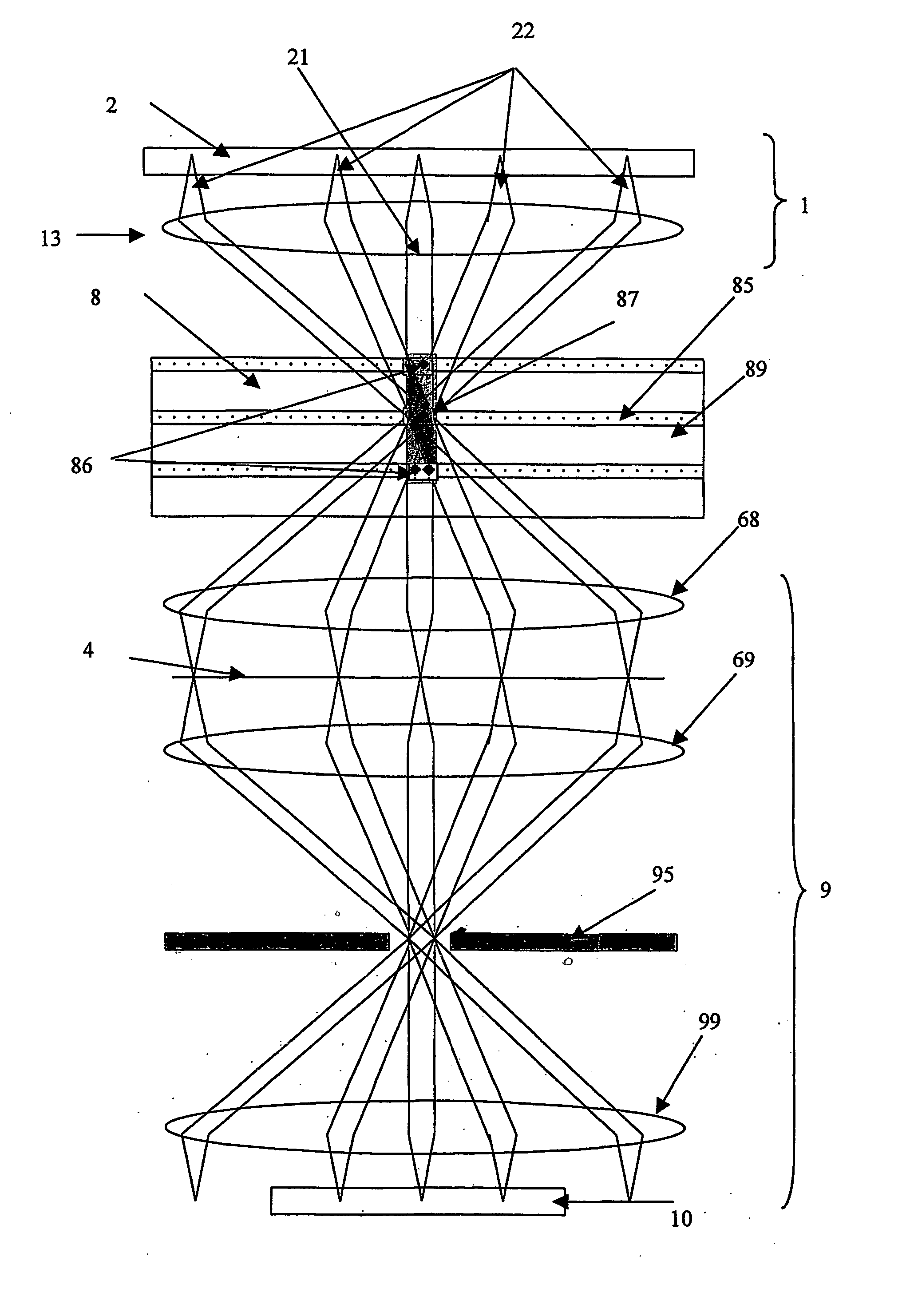High Data Density Volumetic Holographic Data Storage Method and System
a volumetic, high data density technology, applied in the field of holographic data storage system, can solve the problems of high precision drive, large number of holographic materials with invariable size, and complex structure of holographic components
- Summary
- Abstract
- Description
- Claims
- Application Information
AI Technical Summary
Benefits of technology
Problems solved by technology
Method used
Image
Examples
Embodiment Construction
[0036] The optical system shown in FIG. 1 is a complex 8f system, which consists of four different objectives. The elements of each objective may be expediently identical. The first Fourier objective 13 generates the Fourier transform of the object (SLM, spatial light modulator) and the second member retransforms the object. The image of the object is created in the back focal plane of the second Fourier objective 68. The SLM 2 located in the first focal plane of the first objective serves for writing the data. The first focal plane of the third Fourier objective 69 coincides with the back focal plane of the second Fourier objective 68. The image of the SLM is in this plane 4. This image is transformed to the back focal plane by the third Fourier objective 69. The fourth Fourier objective 99 retransforms the image of the SLM. Hence, the image of the SLM appears again in the back focal plane of the fourth Fourier objective. This is where the detector array 10 is located. The data car...
PUM
 Login to View More
Login to View More Abstract
Description
Claims
Application Information
 Login to View More
Login to View More - R&D
- Intellectual Property
- Life Sciences
- Materials
- Tech Scout
- Unparalleled Data Quality
- Higher Quality Content
- 60% Fewer Hallucinations
Browse by: Latest US Patents, China's latest patents, Technical Efficacy Thesaurus, Application Domain, Technology Topic, Popular Technical Reports.
© 2025 PatSnap. All rights reserved.Legal|Privacy policy|Modern Slavery Act Transparency Statement|Sitemap|About US| Contact US: help@patsnap.com



